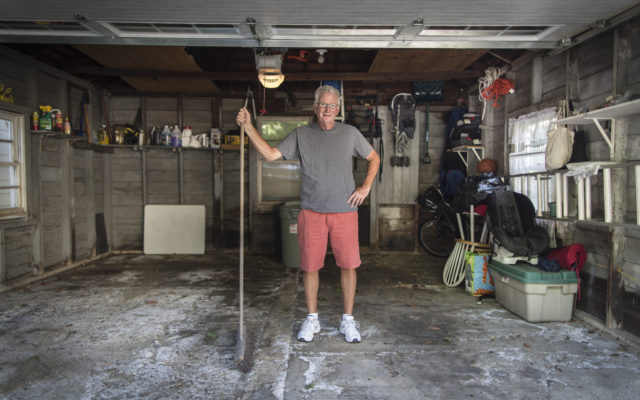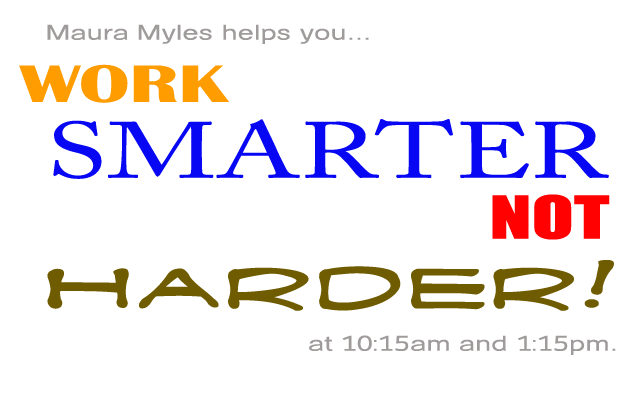WORK SMARTER NOT HARDER: Picture a De-Cluttered Life – And You’ll Have It.

Did you know there’s an incredibly simple way to get clutter gone? There is. It’s easy and it’s free.
Whether you’re fed up with your closet, office, basement, garage, car or your whole home, this one thing will help get you going – and it will help you finish the job.
Here’s what you do: “Picture De-Clutter.” SIMPLY TAKE A PICTURE. Now you can see how someone else might view it. And you can picture in your mind, how you’d like it to be. Start small, with half of a closet, or one cabinet, or even the inside of your car. Then, take another picture, at the half-way mark, and one at the end.
Don’t try to do a whole room (or the whole home) at once… Address one thing at a time.
You’ll feel increased satisfaction, along the way. And it will inspire you to take on the next project. You may even feel like the whole process is more manageable, more “under control.”
Plus, you can prove “how bad it was,” when it “looks great, now!”

Then, LifeHacker recommends you take these easy steps:
1. Set aside small sessions of time to declutter.
No more than an hour is really productive. But set an alarm or timer for at least 20 minutes, and pull out the first items. When you’ve made some headway; step away for an hour. Then, return to the project, refreshed and rejuvenated, for another small stretch.
2. Remove and process clutter in different areas of your home.
It’s not uncommon to become “clutter-blind” or overly accustomed to clutter in a particular space. The clutter has been there for such a long time that you are used it; it starts to seem like it belongs… However, once you move a stack of makeup clutter from your bathroom to your living room, it suddenly becomes clear that the clutter doesn’t belong there. Process clutter from one room in an entirely different room. It will put things in perspective.
3. Have a trash and recycling bag/bin handy – or 3.
You’ll want to make it as easy as possible to dispose of items, specifically. Purpose one bin for recycling, one for donation and one for trash. Then, place the unwanted stuff in bins outside of your house or apartment so it doesn’t have a chance to get back inside your home.
4. Declutter from top to bottom.
Ever hear you should clean a house from top to bottom? This also applies to decluttering. When you clean your house, you’re getting rid of all the stuff you don’t want: webs, dust, dander, lint, etc. You’ll see, as you go, that it’s easiest and cleanest. Start with the attic or bedrooms, and work your way down the basement or garage. In each room, start at the top – like in the kitchen: above the cabinets, in them, on the counter, under it, and on the floor, last.
5. Declutter a room from the inside out.
Have a lot of clutter in a particular room? You may want to declutter this room from the center space to the perimeter or walls. Not only will you make it easier for you get in and out of the room, you’ll also be able to see progress that much faster. For starters, you’ll be able to see a clear floor space! Work in either a clockwise or counterclockwise way, around the room, so you can see progress and not get overwhelmed.
6. Try the “grab and go” approach.
However, if you’ve got a lot of clutter in a particular area or space and aren’t sure where to start, simply grab a small stack of clutter and get to work. You could use a small basket, box, bag or container to temporarily house this small pile of clutter. This way, you have a small, contained and finite amount of clutter to process and focus upon without being overwhelmed with a large mass of stuff. Ants move one morsel of time on the ant farm!
7. Make signs to help with the decluttering process.
Decluttering isn’t always about throwing stuff away, sometimes it means sorting through stack of items you actually want to keep. Whenever you begin a decluttering session, consider writing up small signs to help you easily identify what’s what – then where it should go. “Trash” and “Recycle,” and then, “Living Room,” “Home Office,” “Basement,” and so on.
When it comes to decluttering, it helps to take a practical look at your belongings and how you are, or are not, using them. Ask yourself some of the following types of questions as you tackle your stuff: Have you used this item in the past year? Are you making use it right now? Are you saving it because you think you might need it in future? Do you like the item, or do you no longer have interest in it? How is the item adding value to your life and home? Is it weighing you down – preventing you from doing things you’d otherwise like to do?
9. Let go of useless, broken, outdated and otherwise unusable stuff.
A broken toaster, an MP3 player from seven years ago, outdated fashion magazines… what do these items have in common? Broken, busted and otherwise unusable stuff just becomes a headache, over time, in your home. It sits there taking up space and sucks your energy and attention away from what really matters.
10. Don’t wait for the perfect time to declutter.
When’s the perfect time to declutter? When things are slightly cluttered or chaotic beyond belief? Actually, there is no perfect time to declutter. It’s all about learning how to keep things in check and under control. Take time to regularly declutter the rooms of your home so things don’t get too out of hand. Get it on the calendar. 🙂
See the full article from LIFEHACKER, HERE.






